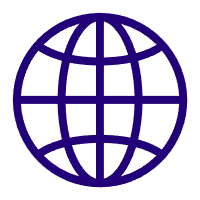Patent expiration and increase in generic drugs usher in new opportunities for China's API market
リリース時間:
2015-11-13 10:36
出典:
Biological Exploration
An analyst report on Fiercepharma website analyzed the cumulative value of patent-expiring originator drugs in 2015 to be as high as $44 billion. As a result of the expiration of patented drugs, a wave of generic drug companies to follow the trend of imitation, which indirectly pull the need for APIs.
China's API road, the road is wide and long
(1) get the upstream raw materials and preparations to get the world
As we all know, China is the world's largest raw material supply of lycopene; the world's largest raw material supply of grape seed; the world's largest raw material supply of collagen; the world's largest raw material supply of yeast; the world's largest raw material supply of ginkgo biloba; the world's largest raw material supply of spirulina; China's pharmaceutical industry consists of chemical drugs (including chemical APIs, preparations) accounted for 45% of the share. China produces more than 1,500 kinds of chemical APIs, with an output of 2 million tons, and the varieties with an annual output of more than 10,000 tons include penicillin, amoxicillin, vitamin C, vitamin E and so on. More than 20 kinds of chemical APIs represented by penicillin and vitamin C ranked the first in the world in terms of production and export; no other country is as rich in natural species as China, which is why Chinese medicine can be born in China (Remarks: the author is not a Chinese medicine fan).
(2) the inadequacy of China's raw material pharmaceutical enterprises, the urgent need for transformation
Due to the technical capabilities and production management level of China's pharmaceutical industry and the low level of awareness of generic drugs as well as insufficient research on the selection of the source of raw and auxiliary materials, raw material crystalline control, screening of prescriptions and process parameters and experimental stability; China's advantage of owning raw and auxiliary material resources has not been reflected in the international arena. Ms. Tu Youyou discovered artemisinin by extracting and separating traditional materials, which makes us realize that the possibility of success is just around the corner with the background of resources and continuous improvement of technology.
When chatting with a senior in the pharmaceutical industry about the prototype of API companies, the author said that the probability of success would be even higher if these companies used their traditional resources as a stepping stone to focus on promising biopharmaceuticals, especially immunotherapies centered on CAR-T and PD-1.
3) Learning from TEVA's successful model to drive API growth with generics
Israel's TEVA Pharmaceuticals (TEVA) from an API OEM, OEM production of enterprises to the preparation of the transition, and then through cooperation / acquisition into the international pharmaceutical market, and jumped to the global pharmaceutical companies top 20.
In 2009, the API business generated $565 million in sales for Teva. Compared to total sales of $13.8 billion, Teva's APIs may seem insignificant. However, considering the "self-sufficiency" of Teva's API supply and the competitive advantage it brings by integrating forward integration, a small API pries a big lever, enabling Teva to produce a wide range of drugs almost omnipotently, and also providing an important guarantee for the company to win the first generic drugs. API production advantage thus evolved into a secret weapon of Teva Pharmaceutical.
4) Production in a large resource country saves a lot of transportation and import/export costs
China produces more than 4,000 kinds of chemical preparations, which can basically meet the needs of the country's disease prevention and treatment. Chinese pharmaceutical companies currently have a total of 187,000 drug approval numbers, of which 121,000 are for chemical drugs, the vast majority of which are generic drugs. Statins, Prilosec, and sartans featured APIs have become new export advantages.
With the expiration of patents of several "heavy" drugs, China's generic drug industry is ushering in a seven-year period from 2014 to 2020, there will be $259 billion of drugs facing patent expiration, although the world's drug market is only growing at a low average annual rate of 4%-5%, however, generics are increasing at an average annual rate of 11%, 46% of the market share may go to generic drugs. The market share may be occupied by generic drugs. The scale of world generic drugs has grown from 89 billion dollars in 2007 to 180 billion dollars in 2014, and the scale of China's generic drug market in 2015 may be close to 500 billion dollars. Due to the richness of raw materials in China, it is also ushering in a period of unprecedented opportunities. 2014 international API market total sales amounted to $134 billion, of which exports totaled $16 billion and imports totaled $8.5 billion.
(5) Increasing population aging generates demand for medicines
Aging is accelerating as China's population over the age of 60 has exceeded 200 million. It takes at least 10 to 20 years to develop a brand-new biopharmaceutical, and it is difficult to rely on independent innovative drugs to meet the clinical needs of the first line in the next 10-20 years. Generic drugs will still be the support and basic guarantee for China's pharmaceutical and healthcare system in the future, and this is what catalyzes the demand for APIs market. Undoubtedly, "small dosage, high efficiency" is the future of the
関连ニュース

オンラインメッセージ


